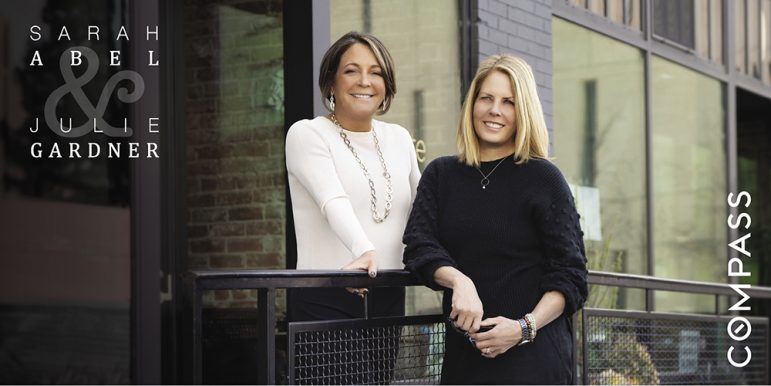Reflecting on housing and homelessness

[SPONSORED]
The personal stories of one Realtor’s battles and triumphs in the highly-competitive Bay Area Real Estate Market, seeking to illuminate and humanize the very real ups-and-downs of homeownership.
Earlier this month, I visited San Quentin with my husband’s law school class. Cliff, whose legal practice has primarily focused on post-conviction remedies, has hosted this annual, student field trip for many years, and after nearly two decades of politely deferring his invitation, I wanted to know if “humanity” lived inside those imposing walls. (It does.)
Established in 1852, and opened in 1854, San Quentin is the oldest prison in California and houses the state’s only death row for men. 546 prisoners are currently on death row in San Quentin; the largest death row not only in the states, but in the Western Hemisphere. Additionally, the prison is home to another 3,000+ inmates, guarded by nearly 360 prison guards, 24 hours a day. (It’s not lost on me that 3,000 was roughly the same number of students who attended my younger son’s elite, East Coast college.)
On the flip side, it’s also the only California state prison to offer college courses, to publish a monthly newspaper and magazine, to air a podcast, to train service dogs for the disabled, and to sport both a baseball and a basketball team. A running track surrounds the prison yard and was described as “neutral space,” where anyone can train for the annual San Quentin marathon; a marathon that requires 105 laps to complete. (You can learn more in the documentary “26.2 to Life.”)
While there’s no doubt that San Quentin is a tough environment, this prison is the first time many of its inmates will have access to programs that teach literacy, math, journalism, chemistry, and computer coding. Inmates may also participate in counseling, Alcoholics Anonymous, Narcotics Anonymous, and group therapy. Ironically, San Quentin will offer many the opportunity to complete the high school education they never received outside.
Whether you believe such offenders have earned the right to educational programs (or not), it’s important to note that 93% of prison inmates will return to civilian life at some point. Given that the recidivism rate for ex-cons is approximately 65%, wouldn’t skilled, engaged, and desirable workers benefit society so much more? (Yes, they would.)
Together, the five inmates who guided our San Quentin tour represented more than 100 years of accumulated incarceration, and each of them has transformed their lives in immeasurable ways. In spite of their difficult and dark pasts, they were kind enough to share their experience and hopes for the future with those of us who had no inkling of what life behind bars means (It starts with two grown men in a cell that’s 6’x8′, a space that’s smaller than many walk-in closets.)
“What would you like us to know about you?” a young woman asked.
“I’ve been institutionalized since I was 10,” Greg explained. “The first thing I stole was a baloney sandwich because I was hungry. By 12, I was homeless and took a coat because it was raining . . . A reckless action that took me three seconds to commit, has landed me in jail for more than 30 years.” He continued, “but I’m not the same boy I was then. I’m a 50-year-old man who’s done the work. We want you to know that we are more than our single worst act, AND that we deserve a second chance.” (Humanity does indeed, live there.)
Homelessness is a national failing, in more ways than meets the eye.
(BTW – It’d be a mistake to believe that all prisons are as progressive as San Quentin. In reality, very few are, and most are focused on punishment – not on rehabilitation.)
What’s prison got to do with high-end real estate you ask?
Almost nothing. By comparison, we’ve lived incredibly charmed lives, but it’s impossible to live anywhere in the Bay Area (or in the U.S.) and not recognize the gross inequities between the “haves and “have-nots;” a gap that seems only to be increasing day-by-day.
And while it seems an intractable problem, if society is to address the homeless crisis, growing crime rates, mass incarceration, inequality, lack of education, food insecurity, addiction, drug overdose, chronic unemployment, healthcare, and child welfare, it MUST begin with basic housing, because NO ONE should be homeless or hungry. Without a roof over your head, there’s no way to stay in school, let alone stay safe. There’s no way to clean up, hold a job, or feed your family. There’s nowhere to belong.
So with the holidays just around the corner, maybe we can forego expensive gifts to one another, replaced by contributions to Habitat for Humanity, The Salvation Army, The Alameda Food Bank, Heifer International, Planned Parenthood, The Southern Poverty Law Center, The Innocence Project, The Red Cross, Save the Children, No Child Hungry, Doctors without Borders, Children’s Hospital, etc., etc., etc . . . (pick your favorite and give generously).
Because there’s absolutely got to be a better way forward than prison, and in the richest country on earth, I refuse to believe that we can’t do better. (We can and we should.)
How can we help you?
Julie Gardner & Sarah Abel | Compass Realty
Not just Realtors, but consultants in all things house and home, we’re here to educate, explore, examine and refer . . . In short, you may count on us to take care of your home as if it were our own and anyone who knows us, knows we take pretty darn good care of our homes.
Learn MORE

